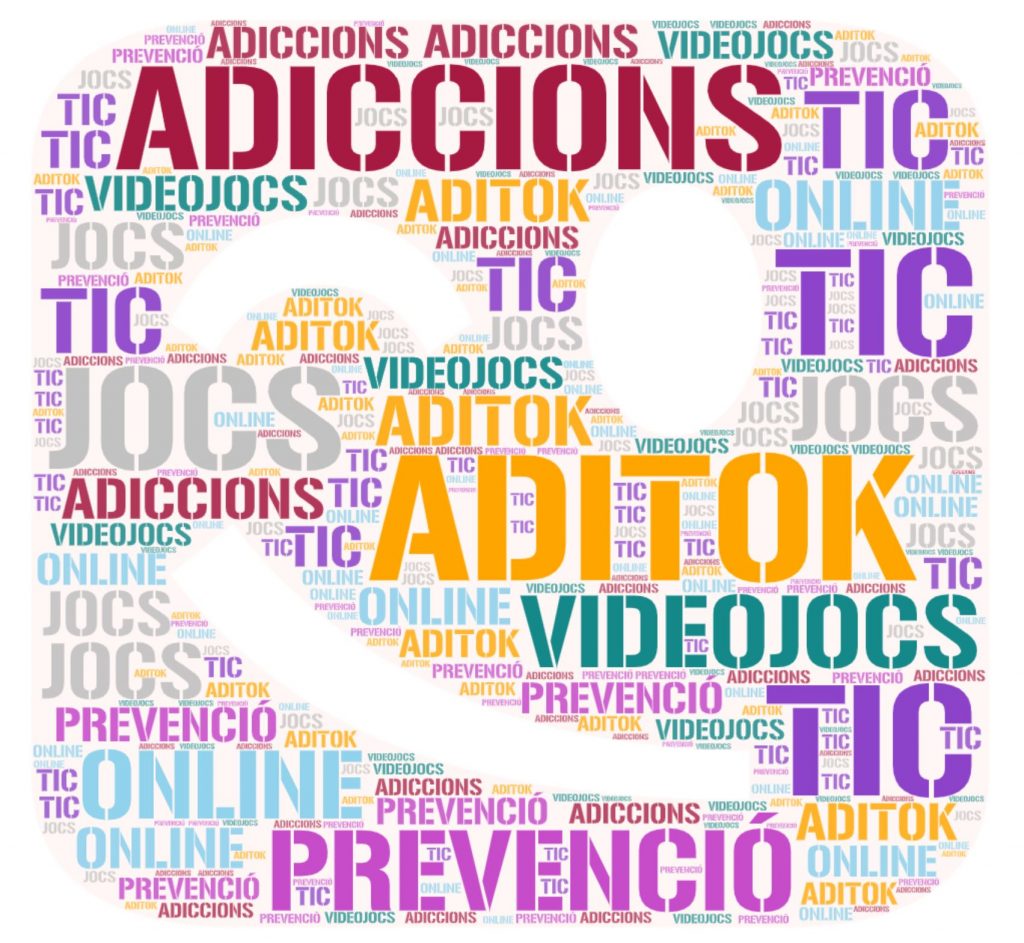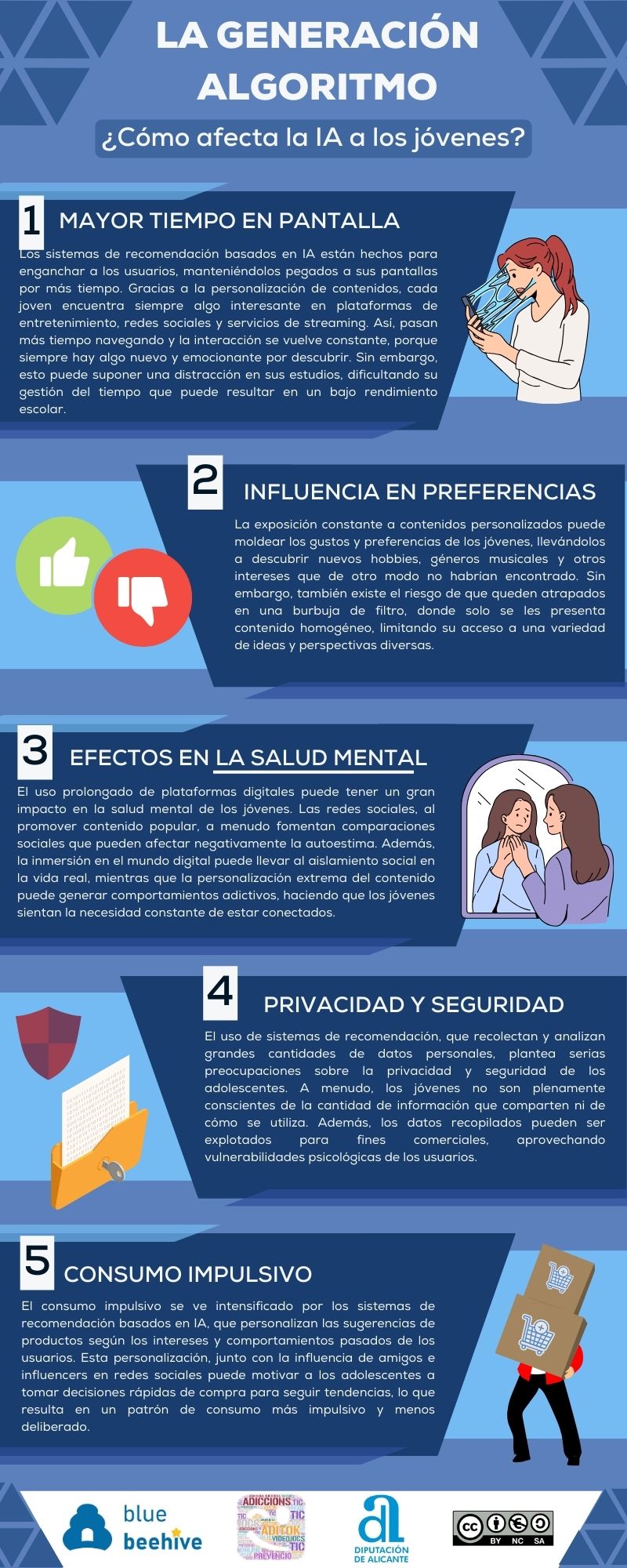
The fifth year of the ADITOK programme has been a success in addressing technological addictions and online gambling in young people, providing tools and knowledge for prevention and early intervention. In this fifth year we have focused on generative Artificial Intelligence (AI) and AI systems that can contribute to technological addictions in young people.
Creation of educational materials:
- Video: A video and the Blue Beehive website have been developed, addressing the use and abuse of video games, social networks and apps.
Infographics: 3 infographics have been created to make visible the risks, reflection and prevention measures.
2. Educational workshops
Schools: Practical workshops have been held during the non-school period, Christmas, spring week and summer.
Content: The workshops have used videos and comics to generate knowledge, reflection and debate on the use of ICT.
3. AI analysis
AI study: We have analysed how AI contributes to technological addictions and created preventive content.
Infographics on AI: Two infographics have been generated on the use of AI in recommendations and its impact on young people.
4. Online gambling This year also addressed online gambling across multiple platforms. Topics covered included:
- Problem use by minors and young adults.
- Detection and prevention of online gambling problems in young people.
- Gambling behaviour in adolescents.
- Gambling advertising as a macro-social factor.
- Preventive guidelines based on parental intervention.
- Common signs of problem gambling.
- Guidelines for action and communication in case of problems.
This video outlines the characteristics of problem gambling behaviour and recognises the main factors that predict problem gambling behaviour in adolescents. Guidelines for parental intervention and problem gambling detection are also provided.
The risks of artificial intelligence applied by digital companies to generate addictive behaviour on the part of users have been addressed. These techniques are a risk for young people who are vulnerable and susceptible to accept the use proposed to them without reflecting on the consequences.

Identification and creation of educational materials to recognise the contributions of AI to Technological Addictions:
- Personalisation of the user experience: AI algorithms on social media personalise the content shown to users, increasing the time young people spend on these platforms and potentially leading to overuse.
- Recommendations on streaming platforms: Streaming platforms use AI to recommend content based on viewing history, which may lead young people to spend more time watching videos.
- Immersive gaming experiences: Video games use AI to create more immersive and challenging experiences, increasing their appeal and usage time.
- Social interactions facilitated by AI: Some platforms use AI to facilitate social interactions, such as automated voice chats in video games, increasing the time young people spend on these platforms.
- AI-based notifications: Applications use AI to determine the best time to send notifications, increasing interaction with the application. Analysis and prevention An AI expert has analysed these situations and created preventive content. In addition, two infographics have been generated on the use of AI in recommendations and its impact on young people. AI implementation and technology addictions The implementation of AI in technology applications can contribute to technology addictions. It is crucial to inform about how they work, how they are used by technology companies and how to limit their use through appropriate privacy settings.in addition to all this, video game addictions have been addressed and advice on parental control tools and conflict resolution related to excessive use of technologies is offered. An infographic was created to visually summarise these points.
Detection and prevention of addictive behaviours
Apps and recommendations have been reviewed to detect addictive behaviours and provide early interventions. Parents and educators can use parental control tools and privacy settings to limit the time young people spend on digital platforms.
The incremental development of the programme has made the ADITOK website a point of reference for young people, families and teachers.


